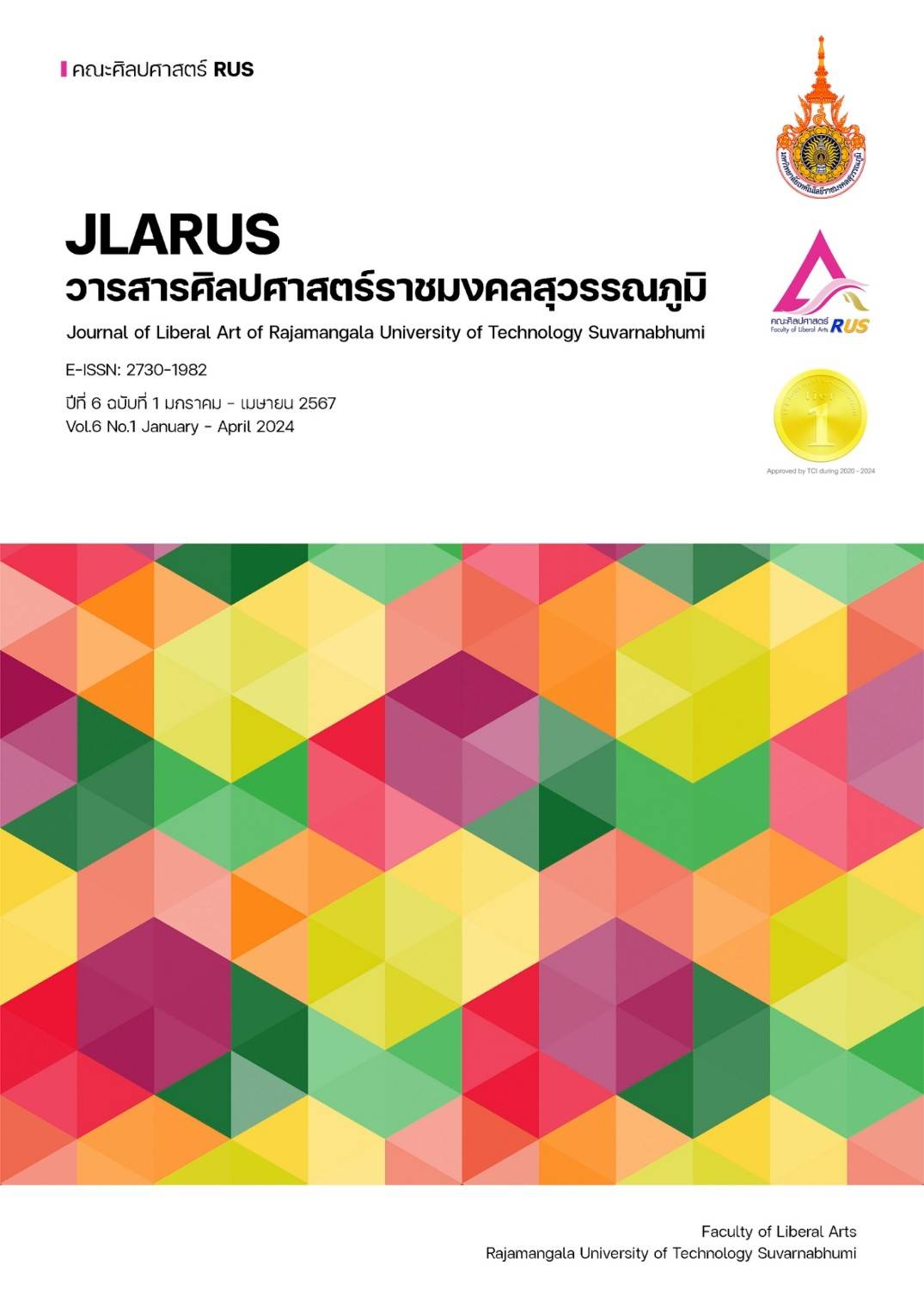EXTERNAL READING BOOK ABOUT SPIRITS OF THE YELLOW LEAVES FOR THAI YOUNG – ADULT, THE STORY OF “MLABRI”
Main Article Content
Abstract
The objective of this research article is to study a outside reading book about Spirits of the Yellow Leaves or Phi Tong Lueng entitled “Mlabri” that conveys the meaning of the yellow Phi Tong for youth to learn. The research method is collecting of information, studying related research and analysis of data. The results of the study are reported in the form of description, summary, and discussion of the findings. The results of the study found that outside reading book about Phi Tong Lueang entitled “Mlabri” had instilled in young learners’ respect for the humanity of nomadic tribes and known the value of forests. The textbook for outside reading conveyed the meaning of Phi Tong Lueang as follows: 1. Phi Tong Lueang was person who respected and feared nature; 2. Phi Tong Lueang was a nomadic forest person; 3. Phi Tong Lueang was the preserver of nature and the forest and 4. Phi Tong Lueang was a tribe that was about to disappear. Linguistic methods that expressed Phi Tong Lueang were as follows: 1) How to refer to (Referencing) 2) How to expand (Modification) 3) Method of metaphor (Metaphor) and 4) Method of story telling (Narrative). That is, a benefit from studying outside reading book about Phi Tong Lueang reflects that the outside reading book tries to insert the mindset of state power as a medium to instill in children and youth an awareness of the ethnic differences of people in Thai society, honor human dignity equally, even if they are nomadic forest people, they have equal rights in society. It also creates awareness among children and youth about forest conservation in Thailand, which is the source of natural perfection and ecology.
Article Details

This work is licensed under a Creative Commons Attribution-NonCommercial-NoDerivatives 4.0 International License.
References
กาญจนา แก้วเทพ. (2541). การวิเคราะห์สื่อ: แนวคิดและเทคนิค. กรุงเทพมหานคร: อินฟินิตี้เพรส.
กาญจนา แก้วเทพ และสมสุข หินวิมาน. (2551). สายธารแห่งนักคิดทฤษฎีเศรษฐศาสตร์ การเมืองกับสื่อสารศึกษา. กรุงเทพมหานคร: ภาพพิมพ์.
บุณยาพร กิตติสุนทโรภาศ และนิธิดา แสงสิงแก้ว. (2562). ภาพตัวแทนของตัวละครที่มีภาวะจิตเภทในภาพยนตร์ไทย. วารสารนิเทศศาสตร์. 37(3). 67-80.
ประเสริฐ ชัยพิกุสิต. (2542). สิบสองชนเผ่าในประเทศไทย: วัฒนธรรมประเพณีที่เป็นเอกลักษณ์. เชียงใหม่: มูลนิธิวัดศรีโสดา.
ปราณี ปราบริปู, ปรัชญา ใจภักดี, พรทิพย์ รักชาติ และจงกล เก็ตมะยูร. (2560). แนวทางการสร้างหนังสือเรียนและหนังสืออ่านเพิ่มเติม. วารสารศึกษาศาสตร์ มสธ., 10(2), 346-359.
มนนุกูล ทิมอ่ำ.(2548). การวิเคราะห์หนังสือเรียน สาระการเรียนรู้ประวัติศาสตร์ตามหลักสูตรการศึกษาขั้นพื้นฐาน พ.ศ.2544 (วิทยานิพนธ์ศิลปศาสตรมหาบัณฑิต สาขาวิชาบรรณารักษศาสตร์และสารสนเทศศาสตร์). กรุงเทพมหานคร: มหาวิทยาลัยราชภัฏบ้านสมเด็จเจ้าพระยา.
วิสันต์ สุขวิสิทธิ์. (2554). ความสัมพันธ์ระหว่างภาษากับอุดมการณ์ ในหนังสือเรียนรายวิชาภาษาไทย ตามหลักสูตรประถมศึกษา พ.ศ. 2503 – 2544 : การศึกษาตามแนววาทกรรมวิเคราะห์เชิงวิพากษ์ (วิทยานิพนธ์ปริญญาดุษฎีบัณฑิต). กรุงเทพมหานคร: จุฬาลงกรณ์มหาวิทยาลัย.
สุรเดช โชติอุดมพันธ์. (2548). สัจนิยมมหัศจรรย์ในวรรณกรรมไทยกับวาทกรรมแห่งความเป็นอื่น.กรุงเทพมหานคร: จุฬาลงกรณ์มหาวิทยาลัย.
สุรางค์ แพรกทอง. (2535). การวิเคราะห์วรรณกรรมเยาวชนของ มาลา คำจันทร์ (วิทยานิพนธ์ปริญญามหาบัณฑิต). ปัตตานี: มหาวิทยาลัยสงขลานครินทร์.
เสรี อาจสาลี. (2506). 15 เผ่าในไทย. พระนคร: พิทยาคาร.
สำนักงานคณะกรรมการการศึกษาขั้นพื้นฐาน. (2554). ประกาศสำนักงานคณะกรรมการการศึกษาขั้นพื้นฐาน เรื่อง รายชื่อหนังสืออ่านนอกเวลา สาระการเรียนรู้ภาษาไทย ตามหลักสูตรแกนกลางการศึกษาขั้นพื้นฐาน พุทธศักราช 2551. สืบค้น 20 มกราคม 2566. จาก https://www.obec.go.th/.
สำนักวิชาการและมาตรฐานการศึกษา สถาบันภาษาไทย กระทรวงศึกษาธิการ. (2560). แนวทางการจัดการเรียนรู้หนังสืออ่านนอกเวลา สาระการเรียนรู้ภาษาไทย ตามหลักสูตรแกนกลางการศึกษาขั้นพื้นฐาน พุทธศักราช 2551. กรุงเทพมหานคร: สกสค.ลาดพร้าว.
Fairclough, N. (1995). Critical discourse analysis: the critical study of language. London: Longman.


